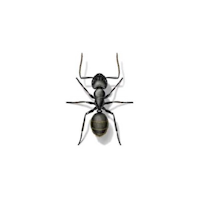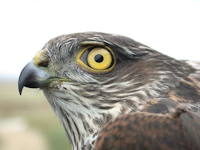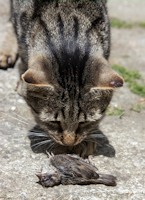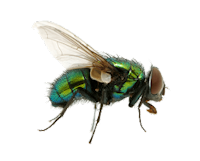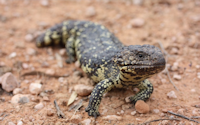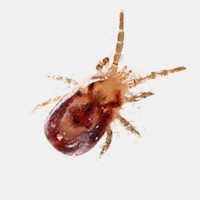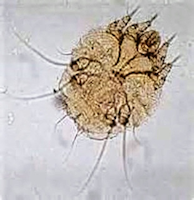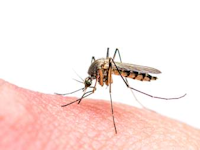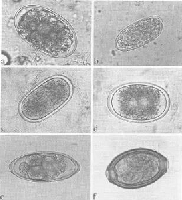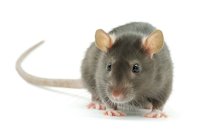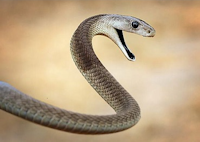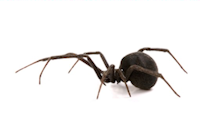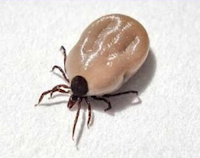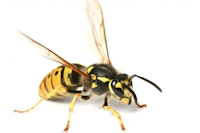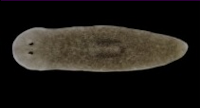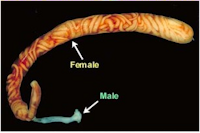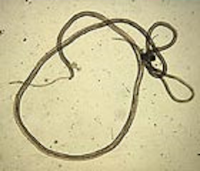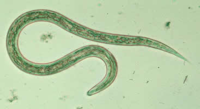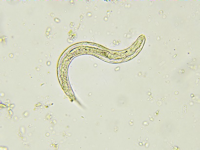Pests
Introduction
This page will not list any medications to treat pests, this will be discussed on the Illnesses page. I want to keep medications and treatments to a single page, so everything is easy for you to find.
Even though you may have set up your cage or aviary perfectly, you should always be on high alert for those unwanted nasties, some you may see with a naked eye and some you may not. Pests come in all shapes and sizes day and night, so you will need to check for them on a regular basis. When your cage or aviary is new, and you have never kept birds in that location before, some pests may not appear for over a year whereas some may be present every day.
When we speak of pests you may be wondering what kind of pests we are referring too, well there is a pretty big list and some I will list below.
• Ants
• Birds
• Cats
• Dogs
• Flies
• Fumes
• Lizards
• Lice
• Mice
• Mites
• Mosquito
• Parasitic worms
• People
• Protozoa
• Rats
• Smoke
• Snakes
• Spiders
• Ticks
• Thieves
• Wasps
The above list is not complete, but does list the most common pests that we know. You maybe surprised to see 'People' listed, but people can be one of the biggest pests of all when keeping small birds, even though they may not know it. How often have you seen someone go to a cage, put their fingers through the wires or make that annoying 'tut' noise at a bird? Well that tut noise to a finch is a warning sound as it is to most species of bird. There have been many times when I have walked through woodlands and heard many birds make a kind of tut sound then all goes quiet, not a bird to be heard, that is because the sound means danger!. If you have doubts, try it with your birds and make tut tut tut sound fast and watch their reaction. There are a lot of annoying things people do to birds, which simply make them a pest.
Ants can invade a nest, eat the chicks or eggs and even kill the parent bird whilst sitting on the nest. I have seen some of the devastation caused by ants which other people have posted online, and it's not a pretty sight. This is one of the reasons why people inspect active nests. Ants like meat as well as sweet substances, and for this reason they can bring harmful bacteria to your birds. If there is an ant nest nearby, then destroy it or move your cage/aviary far away from it. The use of Tangle-foot or similar products around the legs of the cage can help prevent an ant invasion, as long as there is no other way for the ants to enter. Remember, ants are clever and work together to get what they want, so always check for signs of them.
Birds can be a real pest, especially other species. Other birds can kill your finches easily, especially bird of prey. There can be many reasons why another bird will kill one or more of your birds such as territorial reasons, pecking order, feels threatened etc. It is also important to note that a some finches will fight to the death over a nest or a mate. These placid looking birds give the appearance that they would not hurt a fly, but don't be fooled as they have an aggressive side when the time is right.
Cats being a natural hunter will most certainly kill your birds if given the chance. Some cats may ignore other smaller animals but most will not, it depends on the cat's age, how well it is fed and will also depend on its personality. I have known some cats to have no interest in chasing or catching small birds, but that does not mean I would trust it alone with my birds. By nature, they are born hunters in order to survive, and although domesticated they have not lost the urge to hunt and kill. One scratch or bite from a cat which breaks the skin of your finch will require a course of strong antibiotics immediately because cats carry a lot of lethal bacteria deadly to birds. Cats should have no access to your bird aviary or cage at anytime.
Not all dogs are interested in birds, but some are and will eat them is given the opportunity. Just like cats, dogs can also carry diseases harmful to birds if they break the bird's skin. Even a dog that keeps barking at your birds or jumping up at them is considered a pest, so try to keep them away if possible. If you have a dog that is really not bothered by your birds and leaves them alone, then it should be fine, but it is at your own risk. I trust most dogs much more than any cat where birds are concerned, but I always keep an open mind. I find small yappy dogs seem to be the ones you have to watch as these dogs do tend to be too nosey.
Flies obviously carry many germs/diseases due to their lifestyle, they can lay eggs on your chicks or birds or even their food. It is not the eggs so much you need to worry about, but their larva because some will eat an animal alive. Some flies lay eggs in the skin and the maggots will develop within the bird, obviously killing it when they mature, but can also be very painful when the maggots are developing. This is one reason why the cage should always be clean, so there are no smells attracting flies, remove any old foods at the end of the day, keep nesting boxes clean. A build-up of bird droppings will eventually begin to smell, attracting flies, so make sure you clean under their favourite roosting spots often.
Fumes are not only a hazard, but can be a real pest if it happens often. There are many things in this world that produce fumes, and many have no smell at all but are still deadly. Someone living close by who uses non-stick pots or pans to cook with may accidentality allow the pot or pan to overheat, then throw off deadly fumes. Some of these might be unavoidable, but if you suspect fumes might be in the air, I would take action right away to protect the birds the best you can.
Lizards if large enough will seize the opportunity to consume your birds, eggs and chicks. Although they might not be able to get into your cage/aviary they can just like rats, cats, bird of prey, mice, snakes pull your birds through the cage wires. Sometimes they get into the cage/aviary then feast on your birds only to find they can not get back out the same way they got in because their stomachs are too full, when you discover the birds are missing you find the culprit still in the cage/aviary.
Lice (Louse) are a common pest and they are everywhere all the time. You might ask, what is the difference between Lice & Mites? Well lice will feed on dead tissue, dead skin, dust and feathers even on a living bird. Mites will feed on blood and have little or no interest on dead flesh, dust. It does not matter what type of bird it is, lice will eat the feathers of any species of bird. I have seen birds almost featherless because of lice, but they are easy to treat with the right treatments. They are small to see, but can be seen with a naked eye by holding the bird to a light source and extending the wings whilst looking on the underside of the wing. They are not fussy what feathers they consume and can be found all over the bird's body, but they are more easily seen under the wing feathers. Feathers on the bird that appear fragmented or full of holes is usually a clear sign of feather louse. If ever there is an outbreak of feather louse, them all birds should be treated together as these will spread like wildfire.
Mice including rats should be eliminated right from day one, they carry diseases deadly not only to your birds but to humans too. They will eat your birds if given the chance and will eat eggs, chicks too. Usually they will be after the birds' food such as seed, but mice and rats leave droppings and will urinate over the birds' food as they sit in the dish feasting. In the morning, the first thing your bird will do is go to the food dish and eat, this is where the problem starts. Birds will peck at the mice or rats droppings thinking it is food and may even consume it, thus becoming seriously ill fast. Mice and rats too are also meat eaters as they eat insects, meat and other bugs so do everything possible to get rid of them. Drinkers should be scrubbed each day and filled with fresh water because you never know if mice or rats have been drinking from it or if mosquitoes have laid eggs in the water. Any living creature would likely find its way to the water source and drink, so this is why it should be changed each day.
Mosquitoes have been known to bite birds, then soon after the bite the bird dies. Mosquitoes can carry a number of diseases or bacteria which are harmful to your birds, Any insect that draws blood can make your bird become anaemic, especially if there are a lot of blood sucking insects or if it is constantly being attacked. If you have anything that collects rain water such as buckets, cups, pots left in the garden then turn them upside down, even the smallest item that can collect water is a breeding ground for mosquitoes. It is well known that mosquito can carry malaria and spread it further to other animals or people that it bites, so it is important to keep these pets away.
There are many different types of parasitic worms, and most are harmful to your birds. Observing these parasites under the microscope can be challenging because at different stages of the parasites' life they will appear different. As each egg develop they will change shape, colour and sometimes texture, so some degree of experience is required for correct identification. Take into account that you may see dead eggs or empty shells, or even dead parasites. There are no 'all in one' treatments, so identification is vital so that you can administer the right medication for the parasite you wish to eradicate. Below you will find a list of some parasitic worms harmful to your birds.
• Flatworm (Platyhelminthes)
• Gapeworm (red worm / Syngamus trachea)
• Gizzard Worm (Amidostomum sp. and Epomidiostomum sp)
• Hair worm / Horsehair Worm (Nematomorpha)
• Hookworm (Ancylostoma caninum, Ancylostoma braziliense, Uncinaria • • • stenocephala)
• Ringworm (tinea / dermatophytosis)
• Roundworm / Whipworm (Trichuris trichiura)
• Tapeworm (Dipylidium Infection)
• Thread worm / Pinworm (Enterobius vermicularis)
I may have missed some from the list above, but these will be the most common worm parasites you will ever come across when keeping birds. Some worm parasites are harder to kill than others and sadly there is not a one treatment that kills all, but it is best to find one to kill that particular species of worm. Usually the first sign of parasitic worms is weight loss when the infestation progresses. With gapeworm there is a noticeable gaping action as though the bird has something stuck in its throat. It often looks as though it is going to be sick and can usually be seen with its beak open more often than usual. Gapeworm can also be seen in the back of the throat and are usually reddish, hence the term (red worm).
I think one of the biggest pests are people, most of us have no idea how much of a pest we are to birds at the best of times. From poking fingers into their enclosure to making silly noises at them, it is all annoying to the birds. Almost all of your birds will just want you to go away or keep a good distance from them, unless they are hand reared. Hand reared birds tend to prefer the company of humans than their own species because they are used to you and know you. Some people will smoke near the birds which is not healthy for them at all, some will vape near them which does the bird no good at all, whilst some young children simply not leave them alone. By nature, they are fearful of everything because in the open free world they are prey, this is their survival mechanism to keep them alert and out of danger, so extra stress will only make the bird sick over time. I never allow anyone to poke anything in my aviaries or get too close to them, they can see them well enough from a few feet away in my opinion. The hand tame birds seem frightened of other people and will only come to me because they know who I am, they seem to have the ability to tell us apart not by what we wear but by facial recognition.
Protozoa or protozoans (plural) are single celled organisms which live off organic tissues and other matter, these bacteria can be deadly to your finches. Some can kill your bird within hours of infection, whilst others can take months and a fast diagnosis is required so immediate treatment can be applied. There are various types of antibiotics to treat various types of protozoa, so it is always important to get the right medication for the type of protozoa you are trying to kill. It is probably impossible to count all the different types of bacteria which live in this world, and there are no medications for all of them because there are just too many types. There are however medications for the most common types known to us. In the Illnesses page there will be a list of common protozoa and how to treat them. Some protozoa can be harmful to humans too, so be aware of this when handling sick birds. There are various ways for your birds to become infected with protozoans from eating faecal matter (poop), drinking contaminated water, beak to beak feeding, infected food and so on. Care must be taken to ensure any infections do not have the chance to spread throughout your flock, so you will need to remove any birds who may be sick to a hospital cage.
Rats pose the same threat as mice, read above for more info.
Smoke is considered a pest especially if someone nearby often has a fire because the smoke can be choking at times also you may not know what has been burnt. Smoke from wildfires can also be a problem too and should avoid building an outdoor aviary if you see these frequently unless you have an outdoor aviary which can filter out the smoke (mesh-less aviary).
Snakes similar to lizards will target your finches as they too are meat eaters. Some snakes can fit through the bars or wires and catch your bird, then eat it whole because they can dislodge their jaw bones to fit larger animals in their mouths. They are attracted to the heat, especially at nights when it can be cooler, thus finding a meal at the same time. Always make sure there are no hiding places for snakes to hide by removing objects that should not be there. Avoid leaving bags of straw/hay nearby or any nesting/bedding material where a snake could hide. If you live in a location where snakes are a problem, then you could cover the cage or aviary in some kind of small hole netting, small enough to keep snakes/lizards out.
We all know there are many spiders in this world that are venomous and one bite can kill even a human, but there are also some which are far harmless to us humans but still deadly to birds, especially small birds. Such spiders are able to pass right through cage wires or mesh as ease and bite a small bird in a short space of time, so always check inside your cage or aviary for spiders, remove them as soon as possible.
Ticks are a nuisance and thrive in long grass. They will travel by hitching a ride on people's clothes, cats, dogs or other animals. Even a visiting bird from the wild may be carrying them and drop one or more near your cage. Ticks can carry some deadly diseases harmful to humans and animals but a bird with enough ticks on them can be depleted of blood in a short space of time, Many birds with an infestation of ticks usually become anaemic or even die from blood loss so always check your bird for these horrible little critters and remove them right away. Ticks are parasites and should be treated as such.
Well, do I even need to explain the problems with thieves? If keeping an outdoor aviary, it is good practice to make sure all doors and windows are secure. Use security lights and cameras where possible, preferably night vision cameras. It can be quite difficult securing an outdoor aviary from thieves but if you have an aviary that is built onto your house and the birds are able to get inside through a hole then make sure they are all in at nights then block the hole until morning. Some thieves will go to any lengths to steal your birds, so keep this in mind when building an outdoor aviary. Even if you keep birds indoors, they are still not 100% secure from thieves, so make sure you are cautious who you let in to your home to see your birds. People can not steal your birds if they do not know you have them. Leg banding is pointless even if they are closed ringed, as a thief would simply cut the ring off from the leg.
A pest not only to birds but also humans are wasps or hornets. Wasps or hornets rarely sting small birds, but it is not unheard of. We as humans know how painful a sting from a wasp is also how much swelling can be caused, so imagine that same sting on a finch? One or two stings would probably be enough to kill or do some serious damage to your finches, so remove anything that might attract wasps or hornets. Remove any wasp nests which are considered near the aviary. If you are plagued by wasps or any stinging insects, then either bring your birds indoors where they will be safer or cover your aviary with some kind of mosquito netting until the season for stinging insects are over.
Of course there will be many pests we have not mentioned here, but this article is just to highlight the importance of keeping pests at bay. Many aviaries are being built now by using windows or perspex instead of wire mesh or bars, and the use of inlet/outlet fans with filters. These aviaries are built in such a way that most pests can't get to the birds whilst they can still enjoy the daylight and get fresh filtered air. The only downfall is they can not get the natural UV rays from the sun and are often supplemented using UV lighting. Micro pests such as protozoa, mites and other minute critters may still get in, but with a good filtration system and no gaps/cracks in the aviary most are blocked. Always keep pests in mind when building and locating your cage or aviary. A cage can be moved easily, but a large aviary may prove to be a problem. 'Smoke' and 'Fumes' were listed under Toxins but are still considered a pest, especially if they are harmful to your birds.
